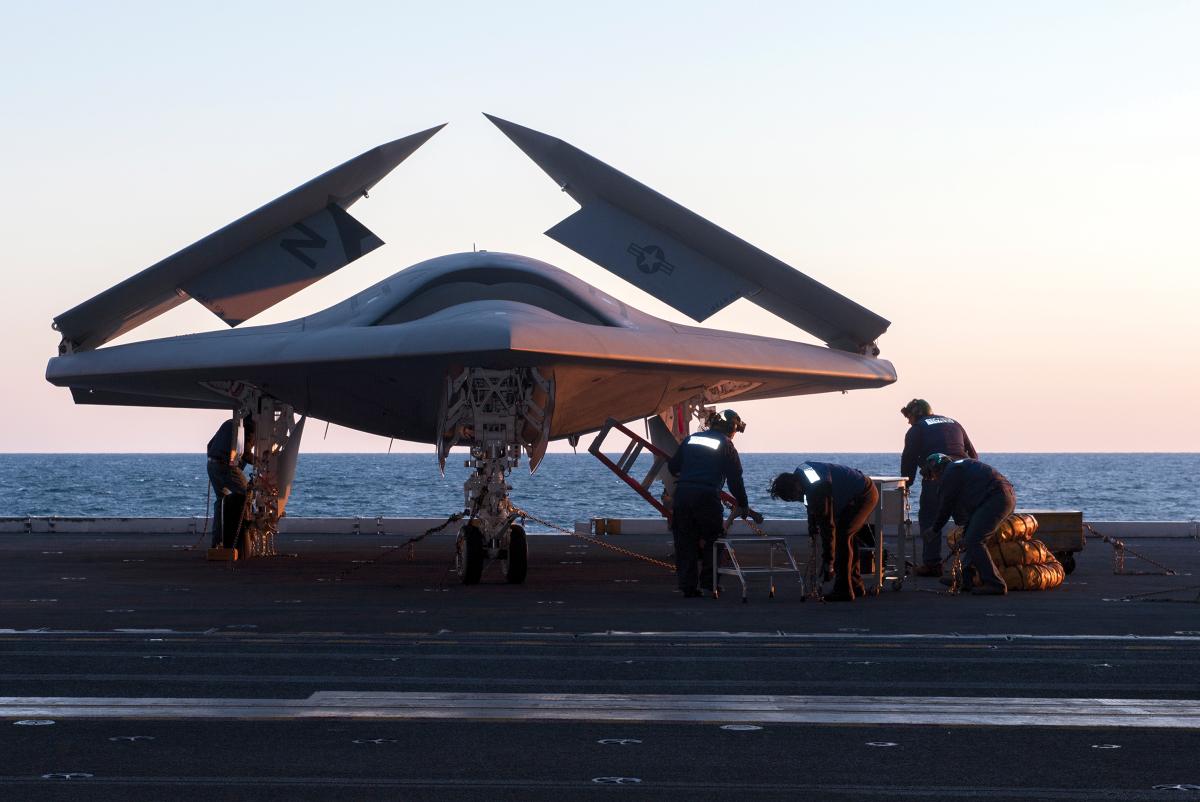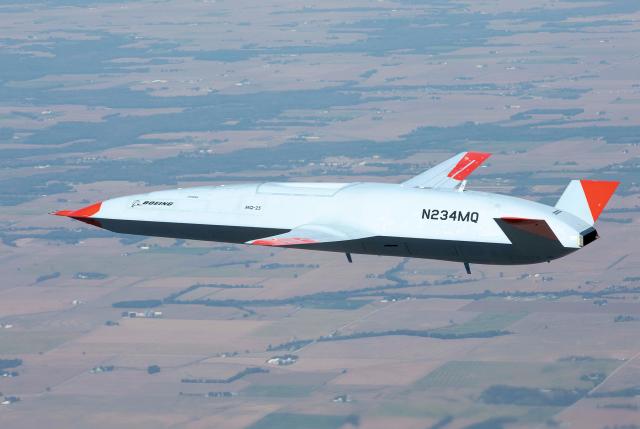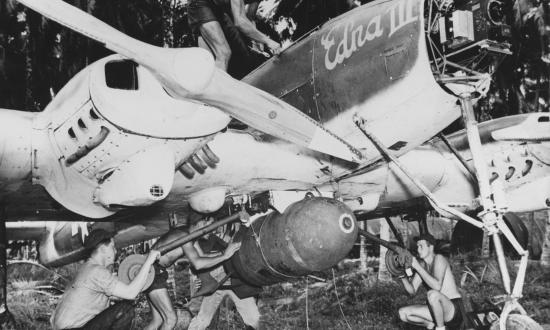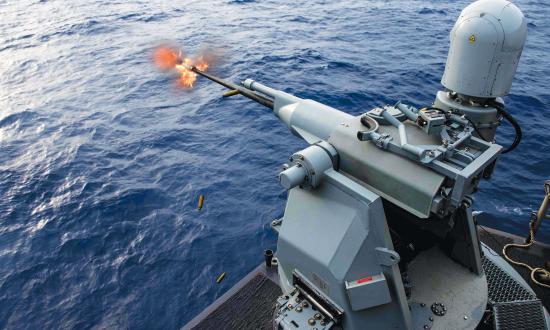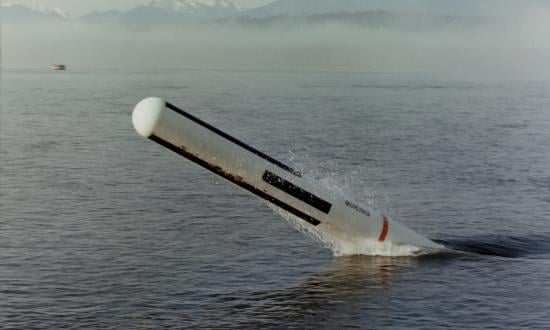The past four decades have seen U.S. naval aviation do a back-and-forth on dedicated strike aircraft that shifts with the geopolitical winds. The service initially committed to replacing the A-6 Intruder with the A-12 Avenger, but high costs led to the cancellation of that strike aircraft. Now, as unmanned aircraft hit the carrier deck, we could see the Navy’s unmanned tanker double as a bomber. That an airborne refueling aircraft might morph into the eventual replacement for the venerable Intruder is just part of naval aviation’s long, twist-laden journey to a new strike jet.
In the late 1980s, the Navy pondered the upcoming retirement of the A-6E Intruder, a twin-engine, carrier-based, night and all-weather bomber, designed to carry both conventional and nuclear weapons. Introduced in 1960, the two-seat A-6 served throughout the Vietnam War with the Navy and Marine Corps. Intruders also flew combat missions against Syria in 1983, Libya in 1986, Iran in 1988, and Iraq in 1991.
The A-6 was central to the aircraft carrier’s Cold War nuclear-strike mission. It could carry up to three nuclear gravity bombs, either the 10–20 kiloton B57 or the 1–500 kiloton B61. This gave it the ability to strike both battlefield and strategic targets, and the bomber’s high subsonic speed and 1,000-mile combat range gave the carrier the ability to strike from the sea deep into the Soviet Union.
The Navy began development of a replacement, the A-12 Avenger, in the mid-1980s. The A-12 was designed when stealth technology was new, and the only operational aircraft with similar radar-evading qualities was the then-secret F-117A Nighthawk stealth “fighter.” The A-12’s stealth design was more advanced—it lacked both horizontal and vertical stabilizers and featured a blended wing and fuselage. The result was a simple triangular design, with a tandem cockpit, that observers nicknamed the “Flying Dorito.”
The Avenger was to be a pure strike aircraft like its predecessor. Program requirements called for it to carry more bombs—up to 12,000 pounds worth—and fly farther than the A-6 while remaining undetectable by Soviet air-defense radars at distances beyond ten miles. It featured folding wings that reduced its hangar footprint and allowed two jets at a time to fit on a carrier elevator. Like more recent stealth aircraft, the A-12 was designed to conceal its payload in an internal weapons bay, ensuring that the carefully crafted stealth profile was not ruined by weapons hanging off wing and fuselage hardpoints.
The Navy ordered six A-12 prototypes, all of which were supposed to be ready for flight testing by June 1990, ahead of a planned buy of 620 aircraft for the Navy and another 238 for the Marine Corps. Unfortunately, by 1991 the aircraft was 18 months behind schedule and the estimated unit cost had ballooned to $96 million ($190 million in 2020 dollars). In addition, the Cold War was clearly winding down, removing the nuclear mission from the A-12’s rationale. Secretary of Defense Dick Cheney canceled the A-12 program in January 1991.
The end of the Cold War marked other changes in naval aviation. The Pentagon budget was reduced to carve out a “peace dividend,” and the number of aircraft carriers in the fleet shrank from 15 in 1991 to 12 in 1994. Affordability became the watchword, and the lack of both a major adversary and a nuclear mission changed naval aviation’s priorities.
By the mid-1990s, it appeared most carrier aviation missions would be conducted against smaller countries with less sophisticated air defenses, such as Iraq or the then-disintegrating Yugoslavia—missions that could be carried out by more affordable strike fighters. The A-6 fleet was retired by 1997 without a direct replacement in the pipeline, and the attack squadrons (of ten aircraft each) deployed on every aircraft carrier was ultimately deleted from the carrier air wing template. Attack missions were delegated instead to each carrier’s two F/A-18 Hornet strike-fighter squadrons, and though the Navy received a new jet in early 2000s in the form of the F/A-18E/F Super Hornet, it traded payload and range for versatility, familiarity, and relative ease of maintenance.
The 2010s saw the resurgence of the Russian military as a threat to European security even as a greater potential threat arose in Asia: the People’s Liberation Army, specifically China’s air and naval forces. The PLA enjoyed double-digit budget increases for almost two decades starting in the early 2000s, and Beijing funneled the country’s new economic wealth into modern naval platforms, such as the Type 052 guided-missile destroyer, the Type 055 guided-missile cruiser, and China’s first aircraft carrier.
The PLA also invested in so-called anti-access/area-denial weapons designed to out-stick U.S. aircraft carriers. China has developed an arsenal of antiship ballistic missiles, including the DF-21D and DF-26, with ranges of a thousand miles or more. These missiles ensure that any U.S. carrier that gets close enough to the mainland must launch air strikes from within China’s engagement envelope. For the first time in decades, U.S. aircraft carriers faced a significant and credible threat.
The rise of new threats coincided with the advent of uncrewed combat aircraft. The Northrop Grumman X-47B unmanned combat air vehicle (UCAV) first flew from the carrier USS George H. W. Bush (CVN-77) in 2013. The UCAV trials showed that unmanned aircraft could successfully integrate with the carrier air wing, but here the Navy found itself at a crossroads: What capability should the first of these platforms bring to the air wing?
The obvious choice was long-range strike, to finally provide the capability lost when the A-12 was canceled in 1991. But that would only provide a squadron’s worth of long-range strike fighters and would do nothing for long-range counter-air. Instead, in 2016, the Navy decided that the first unmanned carrier aircraft would be an aerial refueling aircraft, naming the MQ-25A Stingray that July.
Under the Navy’s current concept of operations, the MQ-25As will relieve the F/A-18E/F Super Hornet of its secondary role as the fleet’s in-flight refueling tanker. Approximately 25 to 30 percent of Super Hornet missions are devoted to tanking. A tanker-optimized aircraft would be more affordable in a period of fiscal austerity and allow Super Hornets to focus on combat missions while extending the effective range of the F/A-18E/F and the F-35C in offensive and defensive missions. Rather than one long-range strike squadron, a Navy air wing soon should have four.
Initially, the MQ-25A will be a tanker, but the aircraft in the long term could evolve limited intelligence, surveillance, and reconnaissance (ISR) and strike abilities. Two wing-mounted pylons will carry additional fuel tanks but could someday carry bombs and missiles, including the Long-Range Anti-Ship Missile and Joint Direct-Attack Munition GPS-guided bomb. An MQ-25A is expected to have a range of 500 miles with 2,200 gallons of fuel, which suggests the aircraft could carry some combination of fuel and a limited munition payload a very long distance. The MQ-25A would have to carry the weapons externally, and thus would not be a stealthy penetrator, but suitably modified, it would offer some interim standoff or long-range capability.
The loss of the A-12 Avenger did not hit the Navy particularly hard at the time, as the service was able to make do with existing aircraft in the absence of any peer competitor. The current threat environment, however, with its antiship ballistic missiles and hypersonic weapons, demands a stealthy, long-range platform. If the carrier is to be useful into the 2030s and beyond, it must evolve the ability to outrange these threats and more. Fortunately, one of the carrier’s greatest strengths is its plug-and-play nature, making it possible to adapt new technologies by incorporating new aircraft into the air wing. The Navy’s carrier force should be able to adapt unmanned technologies as easily as it did the jet engine—with possibly greater ramifications for U.S. air and sea power.



